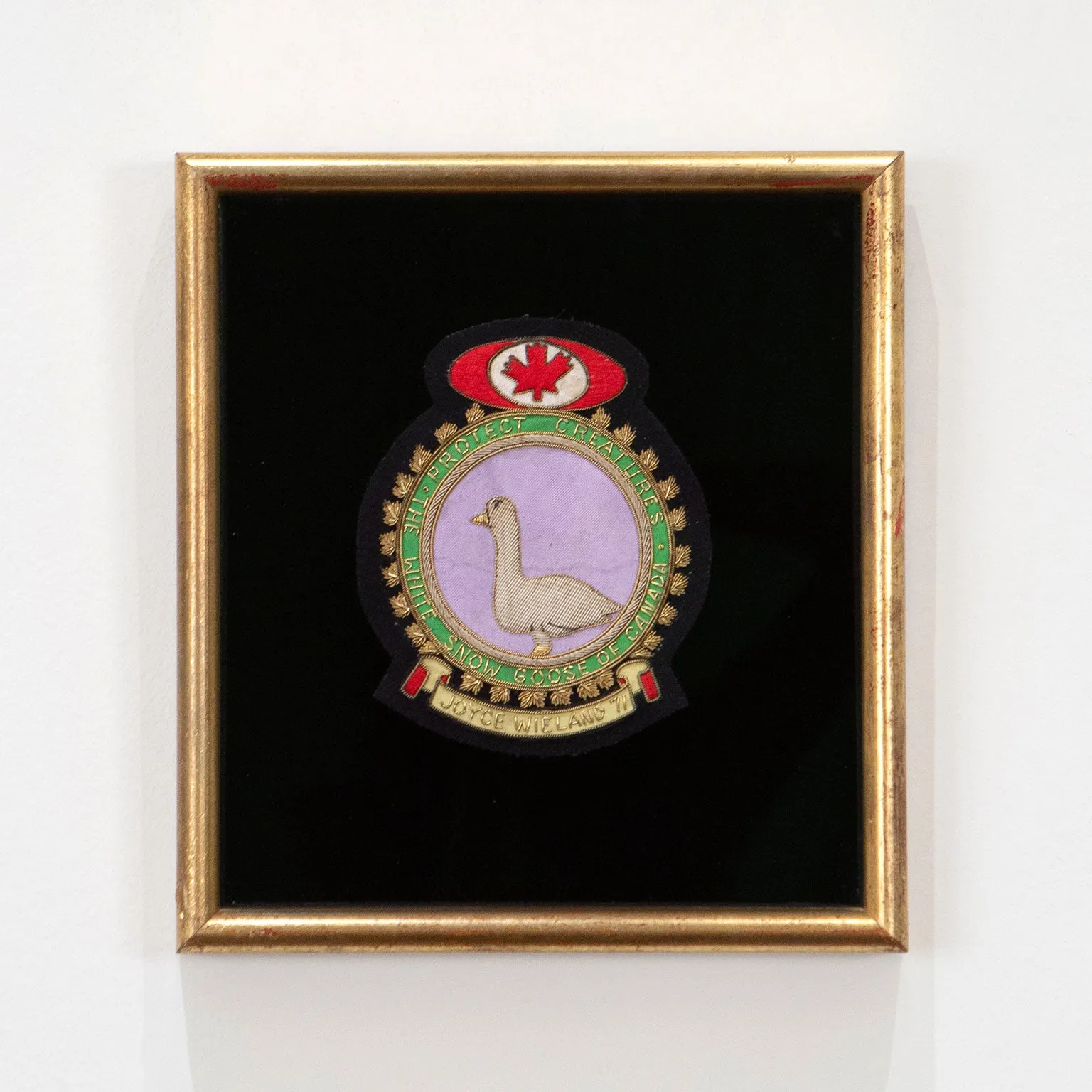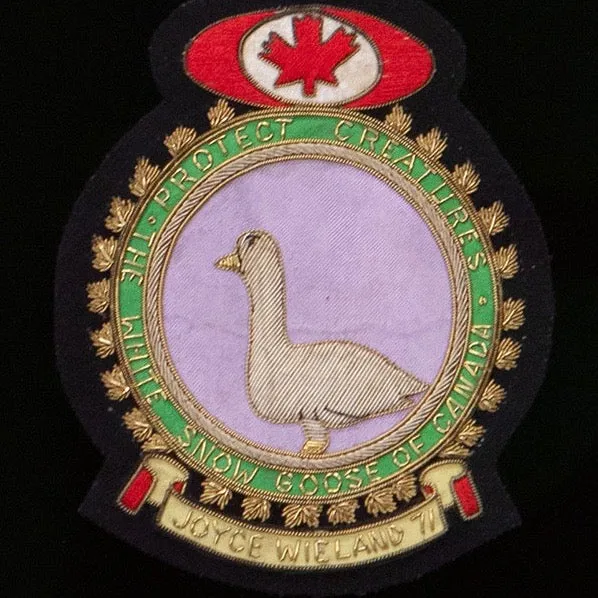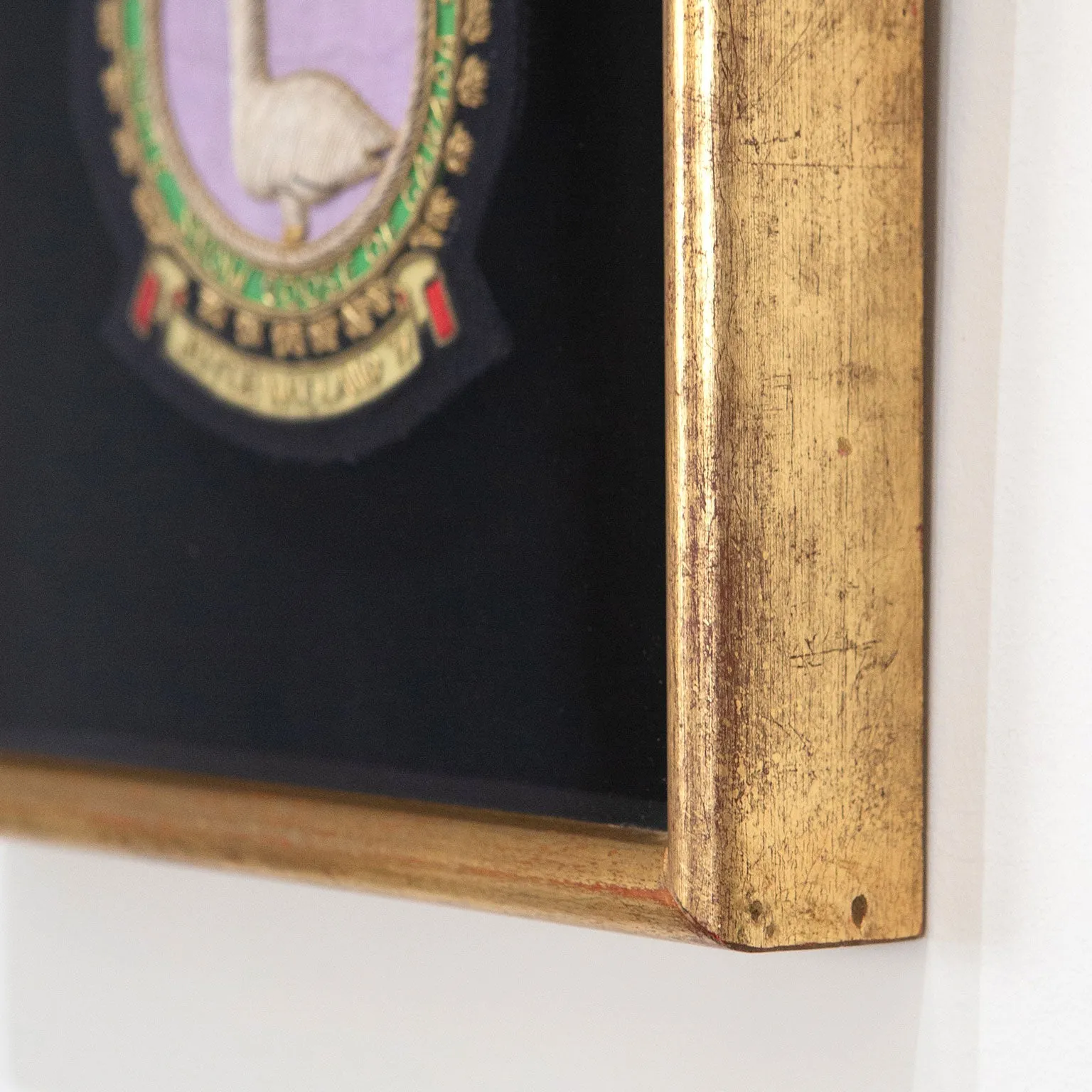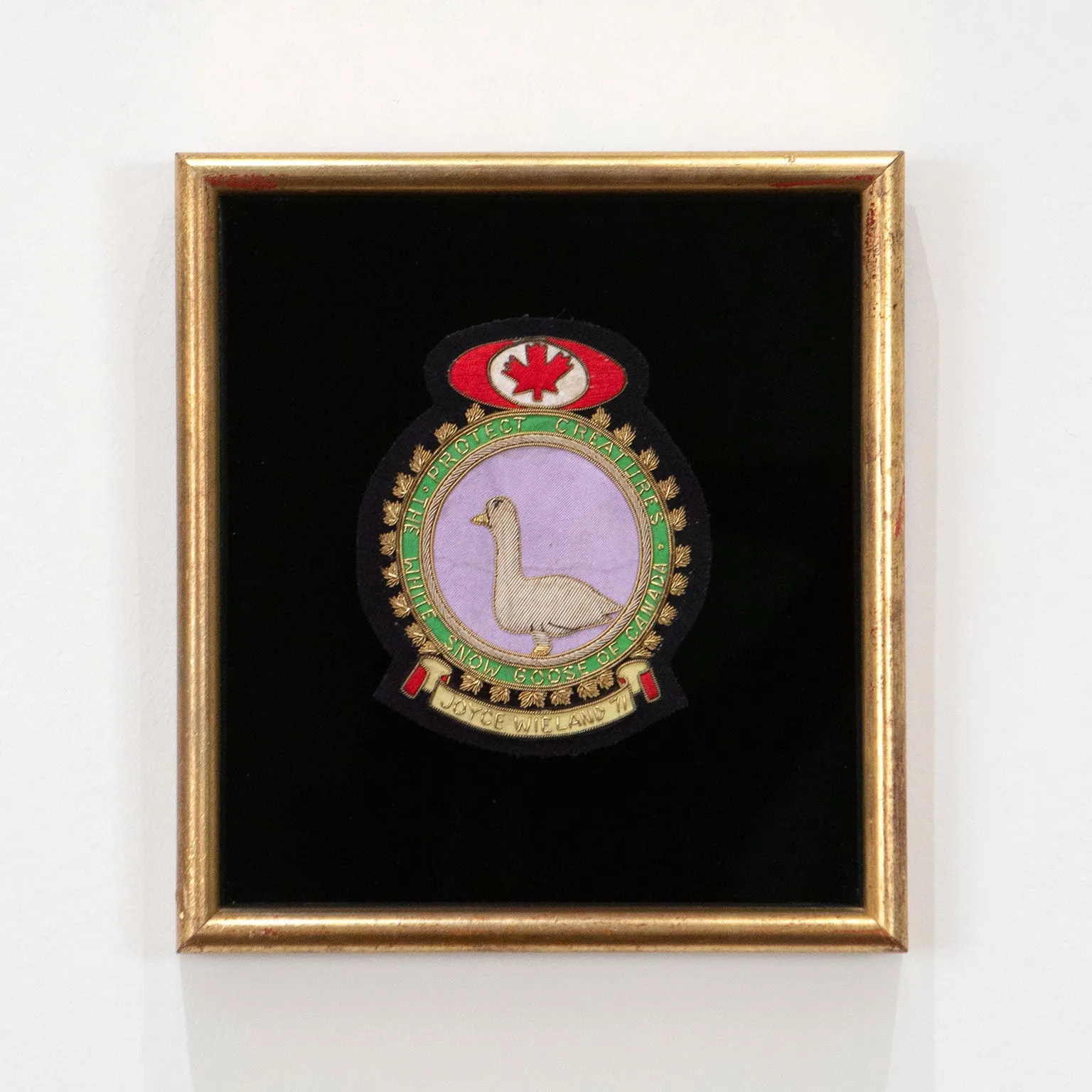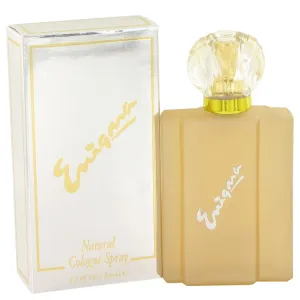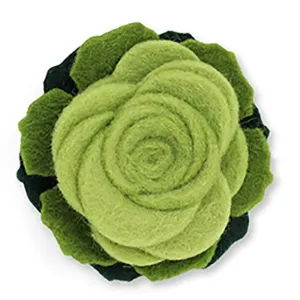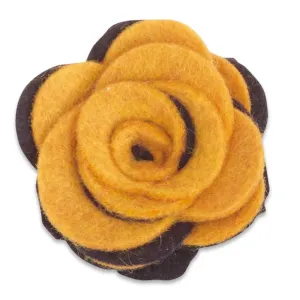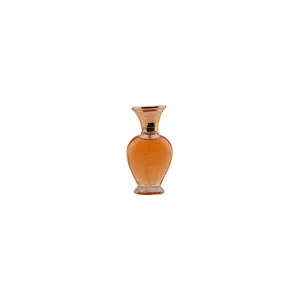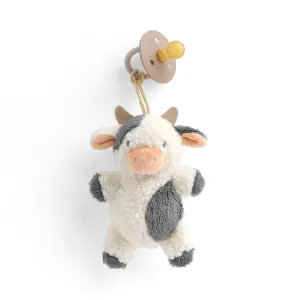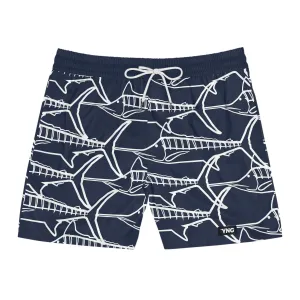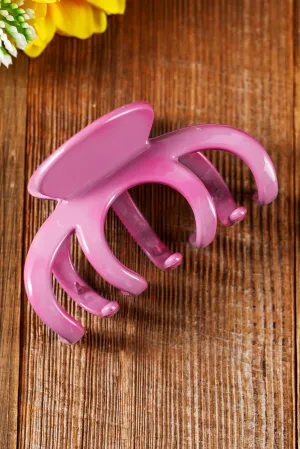Joyce Wieland (1931–1998) was one of the most accomplished and versatile Canadian artists of the 20th century. Emerging on the Toronto art scene in the early 1960s, she would explore the role of women, the body, nationalism and intimacy in a variety of mediums throughout her career.
While she experienced several professional peaks, Wieland established new benchmarks for what was possible for a female artist to achieve. Notably, was the first female artist to have a solo exhibition at the National Gallery (Ottawa) in 1971.
From the 1960s onward, Wieland would explore ecology activism through her work, often from a Canadian perspective. This work, an embroidered crest which commonly serves as an emblem of pride and authority, honors the White Snow Goose.
Text surrounding the perimeter of the crest reads, “Protect creatures – White Snow Goose of Canada” with the Canadian flag affixed above. The piece is a blatant inquiry into what it means to be ‘Canadian,’ questioning the role we play in advocating for the land we inhabit – and in this case, safeguarding native species.
Executed with embroidery, Wieland flips the switch on a medium that is traditionally associated with the matriarchy, asserting her voice in an industry that has been exclusionary to women throughout history. It is worth emphasizing that Wieland incorporated embroidery and textiles decades before artists such as Louise Bourgeois and Tracey Emin.
This is not the only time Wieland made reference to domestic life through her medium of choice. .
Joyce Wieland’s works can be found in numerous public collections across Canada, including The McMichael Canadian Art Collection, Museum London and the Art Gallery of Ontario.
Questions about this piece? or call 1.416.704.1720
“White Snow Goose of Canada”
Canada, 1971
Embroidered floss crest
Edition size unknown (likely under 25)
5.5”H 4.5”W (work)
10.25”H 9.25”W (framed)
Framed with museum glass
Very good condition


